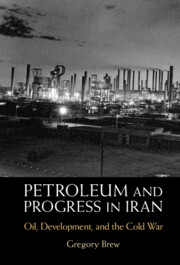Book contents
- Petroleum and Progress in Iran
- Petroleum and Progress in Iran
- Copyright page
- Dedication
- Contents
- Figures
- Acknowledgments
- Note on Transliteration
- Abbreviations
- Introduction
- Part I
- 1 Iran, Global Oil, and the United States, 1901–1947
- 2 “We Have Done Nothing”
- 3 The Mosaddeq Challenge
- 4 The Collapse Narrative
- Part II
- Bibliography
- Index
4 - The Collapse Narrative
The Coup and the Reintegration of Iranian Oil, 1952–1954
from Part I
Published online by Cambridge University Press: 15 December 2022
- Petroleum and Progress in Iran
- Petroleum and Progress in Iran
- Copyright page
- Dedication
- Contents
- Figures
- Acknowledgments
- Note on Transliteration
- Abbreviations
- Introduction
- Part I
- 1 Iran, Global Oil, and the United States, 1901–1947
- 2 “We Have Done Nothing”
- 3 The Mosaddeq Challenge
- 4 The Collapse Narrative
- Part II
- Bibliography
- Index
Summary
In August 1953, the United States and Great Britain overthrew the government of Mohammed Mosaddeq with assistance from Iranian elements and the shah. The coup was motivated by American concerns that an Iranian “collapse” was imminent, one that would pave the way for a takeover by Iranian communists and threaten Western control of Middle Eastern oil reserves. Mosaddeq’s attempts to construct an “oil-less” economy, with some assistance from American developmentalists working in the Point Four program, may have succeeded in disentangling Iran from dependence on oil revenues. The coup squashed this experiment, and in 1954 the United States engineered a new oil agreement between the shah’s government and a consortium of oil companies, reintegrating Iranian oil into the global market and tying Iran’s economic future to the production of petroleum.
- Type
- Chapter
- Information
- Petroleum and Progress in IranOil, Development, and the Cold War, pp. 118 - 148Publisher: Cambridge University PressPrint publication year: 2022

